February is a month for fostering relationships with family and friends and sweethearts.
But we thought our city deserved a valentine, too. So, CITY writers came up with “28 Reasons We Love Rochester” — one reason for every day of the Month of Love.
Did we miss your reason? Let us know at [email protected].
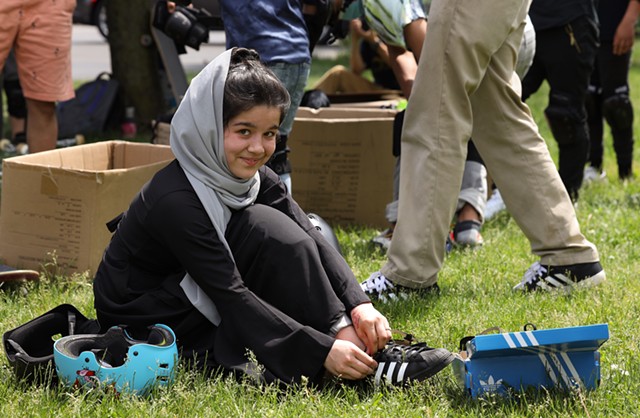 Rochester is a leader in New York when it comes to resettling refugees, particularly those arriving from Africa and Asia. According to Catholic Family Charities, which resettles refugees, Rochester has taken in more than 15,000 refugees since 1972, when the city became a destination for Vietnamese asylum seekers. These days, the city is a destination for people fleeing the likes of Afghanistan, Bhutan, Burma, the Democratic Republic of Congo, Ethiopia, and Somalia. As recently as 2016, Rochester took in more refugees annually than any resettlement destination in the state. These days, the city has the third-highest rate of resettlement in New York, after Utica and Buffalo.
Rochester is a leader in New York when it comes to resettling refugees, particularly those arriving from Africa and Asia. According to Catholic Family Charities, which resettles refugees, Rochester has taken in more than 15,000 refugees since 1972, when the city became a destination for Vietnamese asylum seekers. These days, the city is a destination for people fleeing the likes of Afghanistan, Bhutan, Burma, the Democratic Republic of Congo, Ethiopia, and Somalia. As recently as 2016, Rochester took in more refugees annually than any resettlement destination in the state. These days, the city has the third-highest rate of resettlement in New York, after Utica and Buffalo.
 When Susan B. Anthony cast her ballot in the 1872 presidential election, she didn’t get a sticker declaring “I Voted.” She got a pair of handcuffs. About 150 years after Anthony’s groundbreaking display of civil disobedience, Rochesterians began paying homage to the pioneering suffragist by affixing their “I Voted” stickers to her gravestone at Mt. Hope Cemetery. The annual and emotional tribute began in earnest in 2014 but became a full-on tradition following the 2016 election. So ubiquitous are the voters who leave their mark these days that the cemetery began encasing Anthony’s marble headstone in a plastic sheath prior to elections to protect it from sticker glue and the chemicals used to remove it.
When Susan B. Anthony cast her ballot in the 1872 presidential election, she didn’t get a sticker declaring “I Voted.” She got a pair of handcuffs. About 150 years after Anthony’s groundbreaking display of civil disobedience, Rochesterians began paying homage to the pioneering suffragist by affixing their “I Voted” stickers to her gravestone at Mt. Hope Cemetery. The annual and emotional tribute began in earnest in 2014 but became a full-on tradition following the 2016 election. So ubiquitous are the voters who leave their mark these days that the cemetery began encasing Anthony’s marble headstone in a plastic sheath prior to elections to protect it from sticker glue and the chemicals used to remove it.
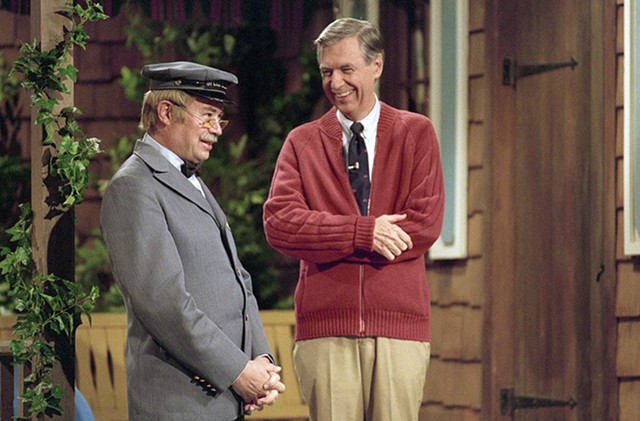 Is chest-thumping neighborly? We don’t know, but we’re going to do it anyway for Rochester being declared the “Most Neighborly City in the United States.” Neighbor.com, a nationwide storage company, bestowed the distinction on the Flower City last year after crunching data on a variety of criteria, from volunteering and charitable giving to citizen happiness. “Rochester is known by locals as a place where residents love to live and never hesitate to lend a hand to their neighbors,” Neighbor.com concluded. Now, go shovel your neighbor’s driveway.
Is chest-thumping neighborly? We don’t know, but we’re going to do it anyway for Rochester being declared the “Most Neighborly City in the United States.” Neighbor.com, a nationwide storage company, bestowed the distinction on the Flower City last year after crunching data on a variety of criteria, from volunteering and charitable giving to citizen happiness. “Rochester is known by locals as a place where residents love to live and never hesitate to lend a hand to their neighbors,” Neighbor.com concluded. Now, go shovel your neighbor’s driveway.
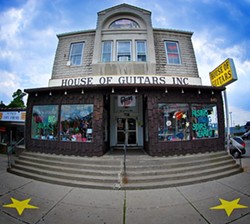 The inventory is chaotic, the staff is impossible to tell apart from the customers, the place is an allergy sufferer’s worst nightmare — and it is all ours. That is, unless you want to count the steady stream of big-name musicians who call the House of Guitars home whenever they’re in town. Metallica, Geddy Lee of Rush, Tyler the Creator, Run DMC, and Garth Brooks are among the musical icons who have shopped the aisles. The self-proclaimed “Store That Ate Your Brain” and “World’s Largest Music Store” has case after case filled with everything from basic beginner six-strings and iconic Rickenbacker basses and guitars to vintage instruments and high-end axes with woods and finishes like fine furniture. You also might find something like a vintage soprano sax dating to the early 1900s. The entire bottom floor is devoted to records and CDs, with a selection so vast — and sometimes — unsorted that it is easy to make a day of digging through the racks and boxes. Looking for something specific? Somehow, the staff knows exactly where it is.
The inventory is chaotic, the staff is impossible to tell apart from the customers, the place is an allergy sufferer’s worst nightmare — and it is all ours. That is, unless you want to count the steady stream of big-name musicians who call the House of Guitars home whenever they’re in town. Metallica, Geddy Lee of Rush, Tyler the Creator, Run DMC, and Garth Brooks are among the musical icons who have shopped the aisles. The self-proclaimed “Store That Ate Your Brain” and “World’s Largest Music Store” has case after case filled with everything from basic beginner six-strings and iconic Rickenbacker basses and guitars to vintage instruments and high-end axes with woods and finishes like fine furniture. You also might find something like a vintage soprano sax dating to the early 1900s. The entire bottom floor is devoted to records and CDs, with a selection so vast — and sometimes — unsorted that it is easy to make a day of digging through the racks and boxes. Looking for something specific? Somehow, the staff knows exactly where it is.
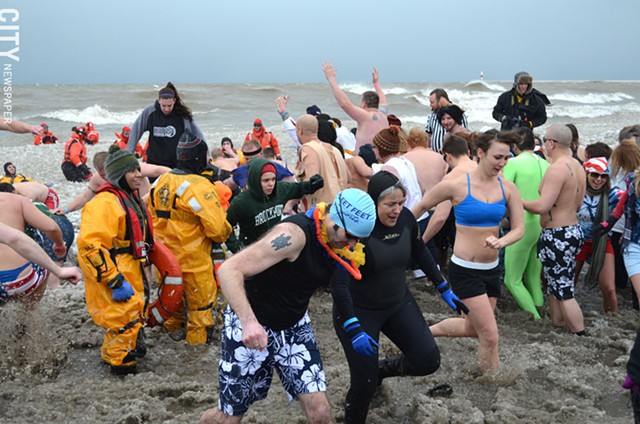 Taking an unseasonal swim in frigid bodies of water as a way to awaken the senses or, you know, flirt with hyperthermia, is a New Year’s Day rite of passage in many communities in the Northeast and Canada. Ice bathing in Rochester is more altruistic. The Rochester Polar Plunge in Lake Ontario is part of a series of winter swims statewide to benefit the Special Olympics New York. We get “Freezin’ for a Reason,” as the event’s motto suggests. That reason is to help support some 3,500 athletes and host 40 Special Olympics competitions annually, according to the organization. The wintry dunk is scheduled for Feb. 5.
Taking an unseasonal swim in frigid bodies of water as a way to awaken the senses or, you know, flirt with hyperthermia, is a New Year’s Day rite of passage in many communities in the Northeast and Canada. Ice bathing in Rochester is more altruistic. The Rochester Polar Plunge in Lake Ontario is part of a series of winter swims statewide to benefit the Special Olympics New York. We get “Freezin’ for a Reason,” as the event’s motto suggests. That reason is to help support some 3,500 athletes and host 40 Special Olympics competitions annually, according to the organization. The wintry dunk is scheduled for Feb. 5.
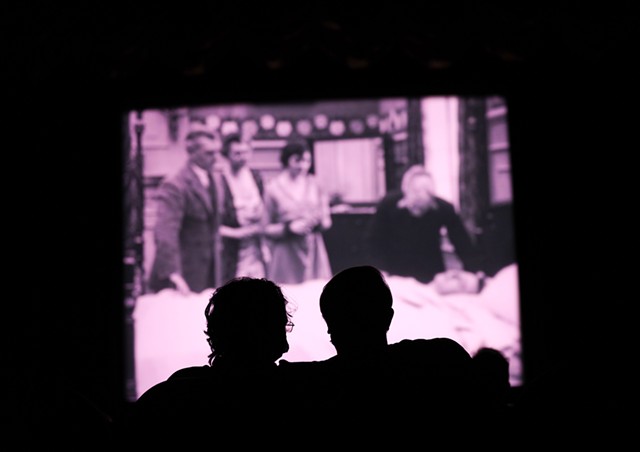 Many independent movie houses and museums around the country screen silent films from time to time. But few show them complemented by live music performed by an accompanist, like in olden times. The George Eastman Museum’s Dryden
Many independent movie houses and museums around the country screen silent films from time to time. But few show them complemented by live music performed by an accompanist, like in olden times. The George Eastman Museum’s Dryden  Theatre is one of them. The art of setting a scene in motion at the Dryden is the domain of pianist Philip Carli, who is one of only about two dozen silent film accompanists in the United States. His improvised scores on the ivories help the audience interpret subtle shifts in mood and plot, and fill the soundless void left by the filmmakers in real time. He works his magic during the theater’s ongoing “Silent Tuesdays” film series.
Theatre is one of them. The art of setting a scene in motion at the Dryden is the domain of pianist Philip Carli, who is one of only about two dozen silent film accompanists in the United States. His improvised scores on the ivories help the audience interpret subtle shifts in mood and plot, and fill the soundless void left by the filmmakers in real time. He works his magic during the theater’s ongoing “Silent Tuesdays” film series.
 Was that the 150 Dewey Avenue bus or the Di’Anna? The Rochester Transit Service in 2009 tore a page out of the playbook of Federal Express, which stamps the names of employees’ children on its planes, when it started naming its 250-plus buses after RTS children and grandchildren. The program has been wildly popular and added a personal touch to the public service.
Was that the 150 Dewey Avenue bus or the Di’Anna? The Rochester Transit Service in 2009 tore a page out of the playbook of Federal Express, which stamps the names of employees’ children on its planes, when it started naming its 250-plus buses after RTS children and grandchildren. The program has been wildly popular and added a personal touch to the public service.
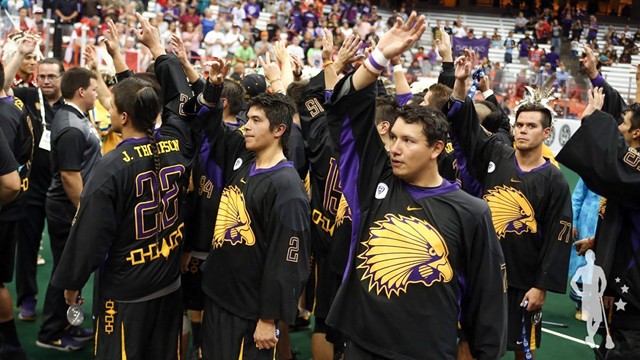 The Haudenosaunee Nationals men’s lacrosse team, which represents the six nations of the Haudenosaunee Confederacy that are native to upstate New York, are vying for recognition from the International Olympic Committee to potentially compete in the 2028 Olympic Games in Los Angeles as a sovereign nation. They wouldn’t be the first Olympic team representing a state not recognized by the I.O.C. or the United Nations, but they would be the first Native American nation to join the list. Recently, the team changed its longtime name — the Iroquois Nationals — to further assert its nationhood.
The Haudenosaunee Nationals men’s lacrosse team, which represents the six nations of the Haudenosaunee Confederacy that are native to upstate New York, are vying for recognition from the International Olympic Committee to potentially compete in the 2028 Olympic Games in Los Angeles as a sovereign nation. They wouldn’t be the first Olympic team representing a state not recognized by the I.O.C. or the United Nations, but they would be the first Native American nation to join the list. Recently, the team changed its longtime name — the Iroquois Nationals — to further assert its nationhood.
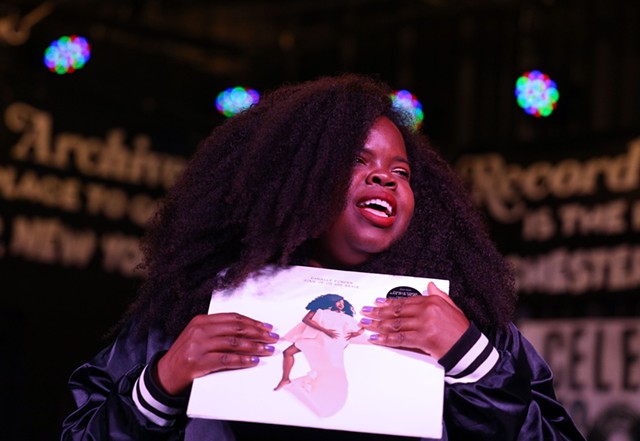 Rochester’s music scene consistently produces national acts across a slew of genres. From Danielle Ponder to Joywave, Giant Panda Guerilla Dub Squad to Undeath, Polar Bear Club to Psyopus, Lou Gramm to Teddy Geiger, the talent pool here runs deep. Scarce is a week where you can’t catch a hardcore punk show, a reggae act, a jazz trio, or a classical orchestra. On many nights, in fact, you have your choice. This year, 13 Eastman School of Music students or alumni are in the running for Grammy Awards.
Rochester’s music scene consistently produces national acts across a slew of genres. From Danielle Ponder to Joywave, Giant Panda Guerilla Dub Squad to Undeath, Polar Bear Club to Psyopus, Lou Gramm to Teddy Geiger, the talent pool here runs deep. Scarce is a week where you can’t catch a hardcore punk show, a reggae act, a jazz trio, or a classical orchestra. On many nights, in fact, you have your choice. This year, 13 Eastman School of Music students or alumni are in the running for Grammy Awards.
 Video games were once considered child’s play. But that was in the Dark Ages of gaming, after Pong’s debut and before the Mario Bros. theme song became an earworm and smartphone users got hooked on Candy Crush. Two Rochester institutions were on the forefront of recognizing that video games were a cultural phenomenon. The Strong National Museum of Play began incorporating video games into its collection some time ago and now is home to the World Video Game Hall of Fame. Rochester Institute of Technology has been consistently ranked as one of the best places in the world to study game design and develop and career. The school offers undergraduate and graduate degrees in the field and its MAGIC Center serves as a multidisciplinary studio where students and researchers can develop their projects.
Video games were once considered child’s play. But that was in the Dark Ages of gaming, after Pong’s debut and before the Mario Bros. theme song became an earworm and smartphone users got hooked on Candy Crush. Two Rochester institutions were on the forefront of recognizing that video games were a cultural phenomenon. The Strong National Museum of Play began incorporating video games into its collection some time ago and now is home to the World Video Game Hall of Fame. Rochester Institute of Technology has been consistently ranked as one of the best places in the world to study game design and develop and career. The school offers undergraduate and graduate degrees in the field and its MAGIC Center serves as a multidisciplinary studio where students and researchers can develop their projects.
 Rochester is something special when it comes to accommodating feathery, winged friends. That is in no small part to its location on the Atlantic Flyway, a north-south migratory route used by around 500 different species of birds. Many flocks traveling the air highway rest here before making the long journey over Lake Ontario. Migrating waterfowl gather sustenance among the marshes at Braddock Bay, Montezuma National Wildlife Refuge to the east, and Iroquois National Wildlife Refuge to the west, while songbirds find refuge in forested areas like Washington Grove at Cobbs Hill Park. All of this makes for thrilling bird watching during the spring and fall, when out-of-towners such as the magnolia warbler, blackpoll warbler, ruby-crowned kinglet, and snow geese take a breather here.
Rochester is something special when it comes to accommodating feathery, winged friends. That is in no small part to its location on the Atlantic Flyway, a north-south migratory route used by around 500 different species of birds. Many flocks traveling the air highway rest here before making the long journey over Lake Ontario. Migrating waterfowl gather sustenance among the marshes at Braddock Bay, Montezuma National Wildlife Refuge to the east, and Iroquois National Wildlife Refuge to the west, while songbirds find refuge in forested areas like Washington Grove at Cobbs Hill Park. All of this makes for thrilling bird watching during the spring and fall, when out-of-towners such as the magnolia warbler, blackpoll warbler, ruby-crowned kinglet, and snow geese take a breather here.
 Who needs a major league team when you have a rabid fanbase, exciting games, and quirky local traditions at a fraction of the cost of a big-market ticket? Rochester has
Who needs a major league team when you have a rabid fanbase, exciting games, and quirky local traditions at a fraction of the cost of a big-market ticket? Rochester has  been hailed over the years by publications and people of note as “the best minor-league sports town” in America — and for good reason. The Rochester Red Wings, the Triple-A affiliate of the Washington Nationals, is the oldest continuously operating minor-league sports franchise in North America. Tickets can be had for $15. The average Major League Baseball ticket last year was $53. The Rochester Americans, the feeder team to the Buffalo Sabres, is as storied of a hockey franchise as they come. The most expensive seats are $37. The average National Hockey League ticket this season is $94. We have professional lacrosse in the Rochester Knighthawks of the National Lacrosse League, professional soccer in the recently revived Rochester New York FC, and colleges offering a high level of athleticism in dozens of sports. The casual sports fan can’t tell the difference between the talent on these teams and those in the big leagues, but they can tell the difference in price.
been hailed over the years by publications and people of note as “the best minor-league sports town” in America — and for good reason. The Rochester Red Wings, the Triple-A affiliate of the Washington Nationals, is the oldest continuously operating minor-league sports franchise in North America. Tickets can be had for $15. The average Major League Baseball ticket last year was $53. The Rochester Americans, the feeder team to the Buffalo Sabres, is as storied of a hockey franchise as they come. The most expensive seats are $37. The average National Hockey League ticket this season is $94. We have professional lacrosse in the Rochester Knighthawks of the National Lacrosse League, professional soccer in the recently revived Rochester New York FC, and colleges offering a high level of athleticism in dozens of sports. The casual sports fan can’t tell the difference between the talent on these teams and those in the big leagues, but they can tell the difference in price.
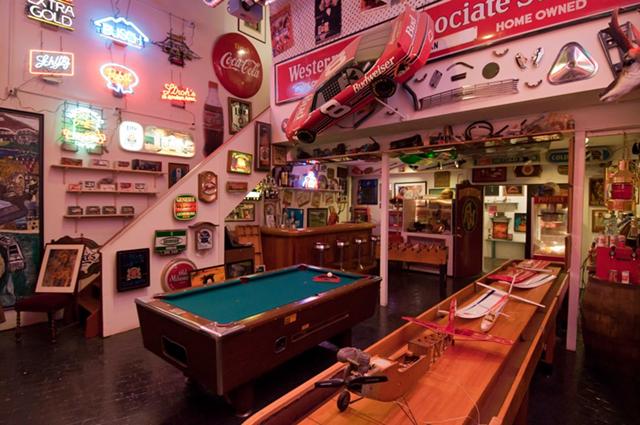 The challenge of explaining Artisan Works to people who aren’t familiar with it is figuring out how to best describe 60,000 square feet of obsolete industrial space bursting with paintings, sculptures, photographs, commercial signs, film posters, antique cars, and more. Imagine that an art gallery and a museum of working-class culture had a baby. But this baby had an overactive pituitary gland and inherited the estate of his Uncles William Randolph Hearst and Charles Foster Kane. That is Artisan Works in a nutshell. It is a bona fide arts and cultural institution integrating the old with the new — a repository for works from some of the world’s most acclaimed artists, like Pablo Picasso and Salvador Dali, as well as an incubator for emerging artists. The collection there, curated over 25 years by co-founders Louis Perticone and Kimberley Trenholm, is an ever-expanding history of artistic, commercial, and social expression.
The challenge of explaining Artisan Works to people who aren’t familiar with it is figuring out how to best describe 60,000 square feet of obsolete industrial space bursting with paintings, sculptures, photographs, commercial signs, film posters, antique cars, and more. Imagine that an art gallery and a museum of working-class culture had a baby. But this baby had an overactive pituitary gland and inherited the estate of his Uncles William Randolph Hearst and Charles Foster Kane. That is Artisan Works in a nutshell. It is a bona fide arts and cultural institution integrating the old with the new — a repository for works from some of the world’s most acclaimed artists, like Pablo Picasso and Salvador Dali, as well as an incubator for emerging artists. The collection there, curated over 25 years by co-founders Louis Perticone and Kimberley Trenholm, is an ever-expanding history of artistic, commercial, and social expression.
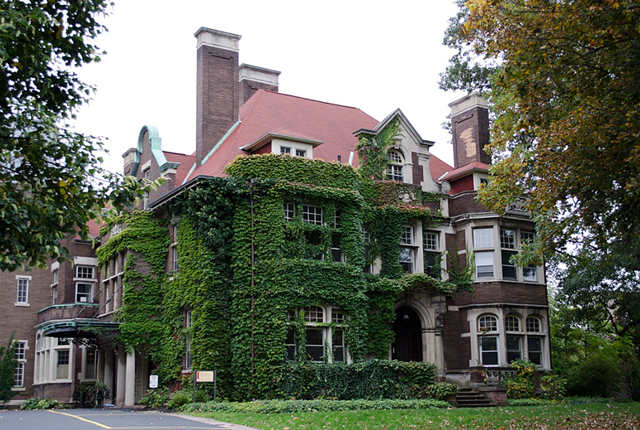 As Rochester boomed in the second half of the 1800s, East Avenue was the locale of choice for the city’s elites to build their homes. The street is lined with magnificent stone homes commissioned by old-money names like the Sibleys, Strongs, and Culvers. George Eastman’s mansion is the most recognizable. The buildings, designed by big-name architects including J. Foster Warner and Claude Bragdon, fell into disrepair before preservationists and city leaders effected a turnaround to save the buildings through preservation or through conversion into offices or apartments. Just off East Avenue on East Boulevard is another gem: the Frank Lloyd Wright-designed Boynton House.
As Rochester boomed in the second half of the 1800s, East Avenue was the locale of choice for the city’s elites to build their homes. The street is lined with magnificent stone homes commissioned by old-money names like the Sibleys, Strongs, and Culvers. George Eastman’s mansion is the most recognizable. The buildings, designed by big-name architects including J. Foster Warner and Claude Bragdon, fell into disrepair before preservationists and city leaders effected a turnaround to save the buildings through preservation or through conversion into offices or apartments. Just off East Avenue on East Boulevard is another gem: the Frank Lloyd Wright-designed Boynton House.
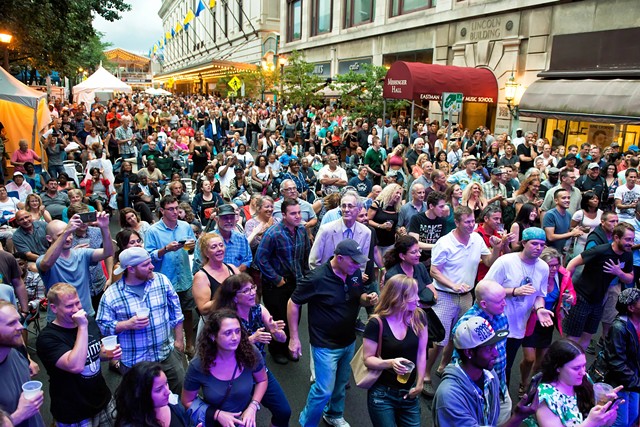 There’s a special “Goldilocks zone” designation for cities that offer all the amenities of urban living while retaining a small-town feel. They are neither too big, nor too small. Rochester is just right. There are no shortages of restaurants, bars, breweries, wineries, museums, parks, and shops — and if you visited any of them, chances are you’’ bump into someone you know.
There’s a special “Goldilocks zone” designation for cities that offer all the amenities of urban living while retaining a small-town feel. They are neither too big, nor too small. Rochester is just right. There are no shortages of restaurants, bars, breweries, wineries, museums, parks, and shops — and if you visited any of them, chances are you’’ bump into someone you know.
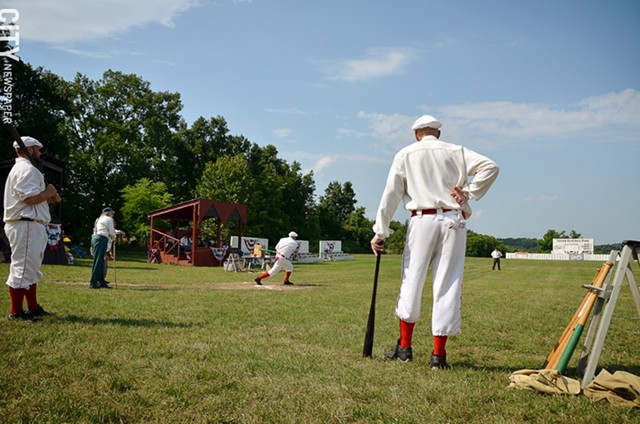 Dozens of leagues reviving the early days of baseball — when it was called “base ball” — have sprung up around the country in the last 25 years. But the Genesee Country Village & Museum’s National Silver Ball Tournament each August is one of the largest vintage baseball gatherings around, in part because of the museum’s Silver Base Ball Park, the nation’s only authentic replica of a 19th-century stadium. Games there are played under the rules of 1867, when pitchers were “hurlers,” no one wore gloves, and a ball caught after once bounce was an out. Throw in woolen long-sleeve jerseys, bow ties, and nicknames like “Peach Fuzz,” “Kid Speed,” and “Rubberband,” and you’ve got game. Old-school game.
Dozens of leagues reviving the early days of baseball — when it was called “base ball” — have sprung up around the country in the last 25 years. But the Genesee Country Village & Museum’s National Silver Ball Tournament each August is one of the largest vintage baseball gatherings around, in part because of the museum’s Silver Base Ball Park, the nation’s only authentic replica of a 19th-century stadium. Games there are played under the rules of 1867, when pitchers were “hurlers,” no one wore gloves, and a ball caught after once bounce was an out. Throw in woolen long-sleeve jerseys, bow ties, and nicknames like “Peach Fuzz,” “Kid Speed,” and “Rubberband,” and you’ve got game. Old-school game.
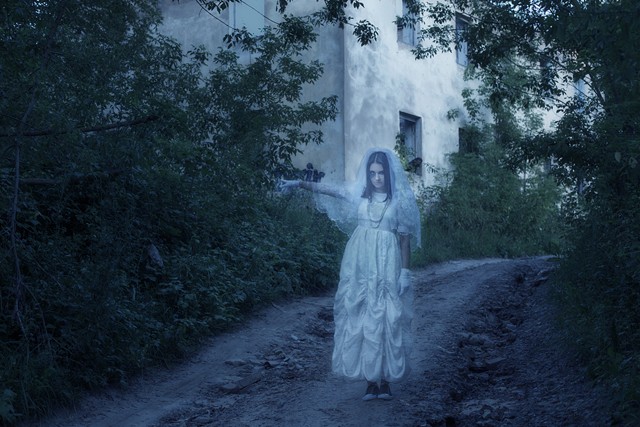 You know your local ghost story has legs when its location is a destination in GPS apps. The so-called “White Lady’s Castle” is nothing more than a crumbling stone wall in a tree grove at Durand Eastman Park that historians say was part of a dining hall that catered to vacationers at the turn of the last century. But lore has it that it’s a castle haunted by the Lady in White, the ghost of a woman named Eelissa who is perpetually searching for a daughter who is said to have run away or been kidnapped. The Lady in White is a common figure in ghost stories the world over, but countless sightings of our White Lady have been reported over the decades, keeping alive a beloved thrilling, chilling local legend. Young men beware: Eelissa doesn’t take kindly to suitors. Mwahahahaha!
You know your local ghost story has legs when its location is a destination in GPS apps. The so-called “White Lady’s Castle” is nothing more than a crumbling stone wall in a tree grove at Durand Eastman Park that historians say was part of a dining hall that catered to vacationers at the turn of the last century. But lore has it that it’s a castle haunted by the Lady in White, the ghost of a woman named Eelissa who is perpetually searching for a daughter who is said to have run away or been kidnapped. The Lady in White is a common figure in ghost stories the world over, but countless sightings of our White Lady have been reported over the decades, keeping alive a beloved thrilling, chilling local legend. Young men beware: Eelissa doesn’t take kindly to suitors. Mwahahahaha!
 The Pirate Toy Fund, a nonprofit that distributes toys to needy children, is calling 10,000 men, women, and children to Archer Field in Chili on Feb. 18 to pelt each other with snowballs in an attempt to break the Guinness Book of World Records for the world’s largest snowball fight. The current record was set in the Canadian city of Saskatoon in 2016, when 7,681 people showed up to battle. They bested a benchmark set in 2013 by Seattle, where the city had to truck in artificial snow. How lame!
The Pirate Toy Fund, a nonprofit that distributes toys to needy children, is calling 10,000 men, women, and children to Archer Field in Chili on Feb. 18 to pelt each other with snowballs in an attempt to break the Guinness Book of World Records for the world’s largest snowball fight. The current record was set in the Canadian city of Saskatoon in 2016, when 7,681 people showed up to battle. They bested a benchmark set in 2013 by Seattle, where the city had to truck in artificial snow. How lame!
 The Garbage Plate (insert eye roll here) has been firmly cemented as Rochester’s signature contribution to world cuisine. That has cast a shadow over other culinary delights, namely Country Sweet, the weird and wonderful signature sweet and sour sauce of the eponymous local fried chicken chain. Not to be confused with the Chinese takeout staple, Country Sweet’s holy nectar mix of ketchup, mustard, vinegar, spices, and a copious amount of sugar makes almost any dish better. While local fixtures Boss Sauce and Sal’s Sassy Sauce are worthy of a space in your fridge, Country Sweet is in a universe of its own. Slightly thicker, slightly sweeter, and all-around divine.
The Garbage Plate (insert eye roll here) has been firmly cemented as Rochester’s signature contribution to world cuisine. That has cast a shadow over other culinary delights, namely Country Sweet, the weird and wonderful signature sweet and sour sauce of the eponymous local fried chicken chain. Not to be confused with the Chinese takeout staple, Country Sweet’s holy nectar mix of ketchup, mustard, vinegar, spices, and a copious amount of sugar makes almost any dish better. While local fixtures Boss Sauce and Sal’s Sassy Sauce are worthy of a space in your fridge, Country Sweet is in a universe of its own. Slightly thicker, slightly sweeter, and all-around divine.
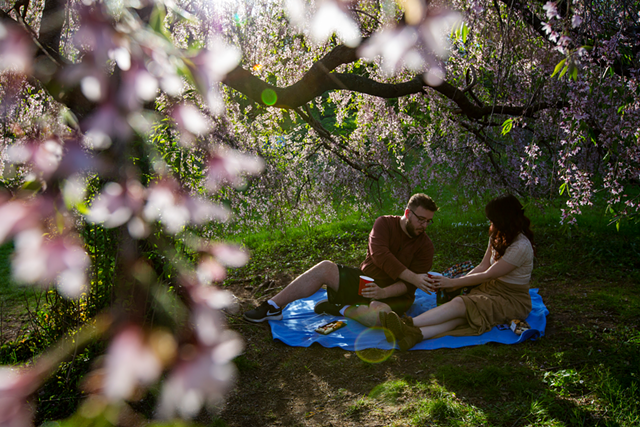 The Finger Lakes region has a striking and varied landscape that includes coastal waters, impressive cascades, and gorges. Many of these features are preserved in parklands. Rochester is just one of a handful of American cities with park systems designed by the country’s pioneering park maker, Frederick Law Olmsted, who saw freedom, public health, and human connection in the land. Our region is home to 24 state parks, including Letchworth State Park, the so-called “Grand Canyon of the East.” There is Hamlin Beach to the west, Chimney Bluffs to the east in Sodus, and Taughannock Falls about an hour or so to the south in Trumansburg.
The Finger Lakes region has a striking and varied landscape that includes coastal waters, impressive cascades, and gorges. Many of these features are preserved in parklands. Rochester is just one of a handful of American cities with park systems designed by the country’s pioneering park maker, Frederick Law Olmsted, who saw freedom, public health, and human connection in the land. Our region is home to 24 state parks, including Letchworth State Park, the so-called “Grand Canyon of the East.” There is Hamlin Beach to the west, Chimney Bluffs to the east in Sodus, and Taughannock Falls about an hour or so to the south in Trumansburg.
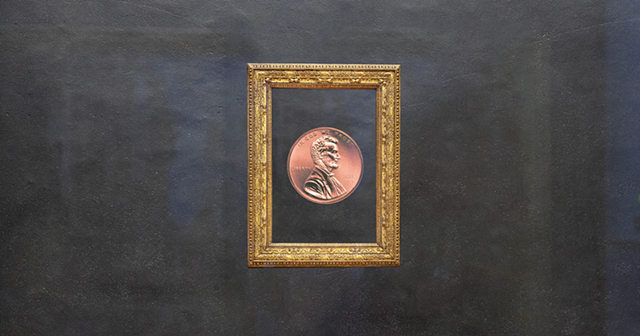 Our local governments have historically scoffed at funding the arts in any meaningful way compared to peer cities and counties across New York. For more than 30 years, the dozens of small arts organizations in Monroe County fought for a slice of a $45,000 pie that the county had set aside for helping finance them. For half as long, the city of Rochester blew off an ordinance that required it to set aside 1 percent of city-funded construction projects over $1 million for public artwork. That changed in the last year when Monroe County upped its budget for small arts groups to $1 million, and Mayor Malik Evans actually made good on the law that his predecessors ignored and banked $236,000 for the purchase of public art.
Our local governments have historically scoffed at funding the arts in any meaningful way compared to peer cities and counties across New York. For more than 30 years, the dozens of small arts organizations in Monroe County fought for a slice of a $45,000 pie that the county had set aside for helping finance them. For half as long, the city of Rochester blew off an ordinance that required it to set aside 1 percent of city-funded construction projects over $1 million for public artwork. That changed in the last year when Monroe County upped its budget for small arts groups to $1 million, and Mayor Malik Evans actually made good on the law that his predecessors ignored and banked $236,000 for the purchase of public art.
 It took about a year for our Pace bike sharing program to hit the skids after nearly 250 bikes went missing and were presumed stolen in 2018. Theft is nothing new to bike sharing programs, but the scale of it here was so egregious that the pandemic gave the company a convenient excuse to pack up what was left of its inventory and hightail it out of town and other mid-sized cities like ours. But a savior emerged from a multipronged private-public partnership between Miami-based bike sharing company HOPR, the city, and Rochester Transit Service that brought 500 pedal bikes, electric assist bikes, and electric scooters to locations around the city and the suburbs. The scooters top out at 15 mph and you’ll feel like a blood-doped Lance Armstrong riding those e-boosted bikes.
It took about a year for our Pace bike sharing program to hit the skids after nearly 250 bikes went missing and were presumed stolen in 2018. Theft is nothing new to bike sharing programs, but the scale of it here was so egregious that the pandemic gave the company a convenient excuse to pack up what was left of its inventory and hightail it out of town and other mid-sized cities like ours. But a savior emerged from a multipronged private-public partnership between Miami-based bike sharing company HOPR, the city, and Rochester Transit Service that brought 500 pedal bikes, electric assist bikes, and electric scooters to locations around the city and the suburbs. The scooters top out at 15 mph and you’ll feel like a blood-doped Lance Armstrong riding those e-boosted bikes.
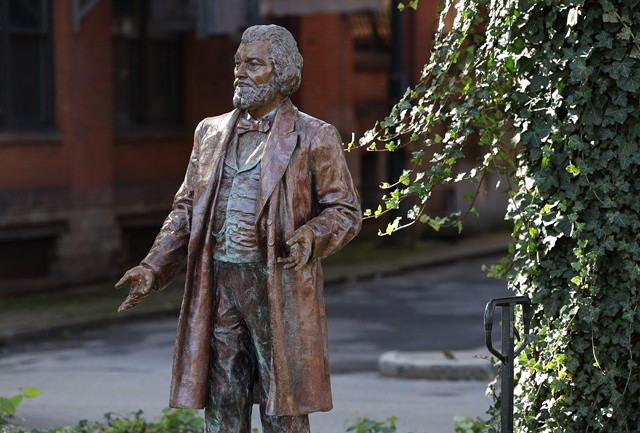 Rochester’s history goes much deeper than its well-worn distinction as America’s first boomtown or the fact that Frederick Douglass and Susan B. Anthony made their homes here. Rochester was part of the so-called “Burned-over District,” a name that reflected the fiery religious zeal that swept the frontier in the early 19th century. Beyond the preaching of Charles Finney and the birth of Spirtualism, Joseph Smith started Mormonism here. The building where the first Book of Mormon was published still stands in downtown Palmyra, and the “Sacred Grove” of forest where Smith is said to have been visited by God and Jesus is open to the public year-round. There’s plenty more to explore, too, such as the landing of French explorer LaSalle at Irondequoit Bay during a 1669 expedition or the city’s grim connection to Jack the Ripper.
Rochester’s history goes much deeper than its well-worn distinction as America’s first boomtown or the fact that Frederick Douglass and Susan B. Anthony made their homes here. Rochester was part of the so-called “Burned-over District,” a name that reflected the fiery religious zeal that swept the frontier in the early 19th century. Beyond the preaching of Charles Finney and the birth of Spirtualism, Joseph Smith started Mormonism here. The building where the first Book of Mormon was published still stands in downtown Palmyra, and the “Sacred Grove” of forest where Smith is said to have been visited by God and Jesus is open to the public year-round. There’s plenty more to explore, too, such as the landing of French explorer LaSalle at Irondequoit Bay during a 1669 expedition or the city’s grim connection to Jack the Ripper.
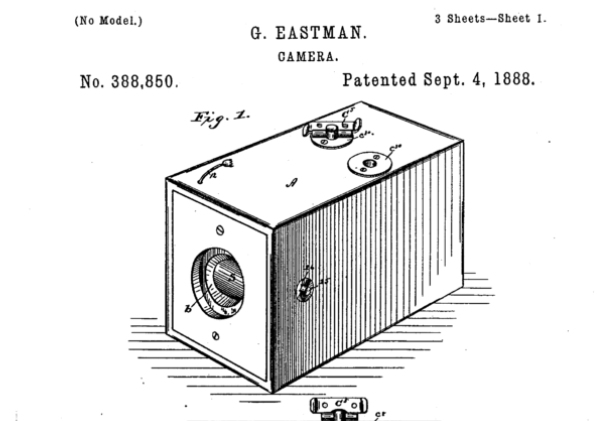 Throughout its history, Rochester has been a city shaped by invention and innovation. George Eastman’s camera and Chester Carlson’s pioneering work on photocopying put Rochester on the map, but we can also take credit for pipe cleaners, Jello, early versions of the automobile, Jolt Cola (slogan: “All the sugar and twice the caffeine”), and the conedom, an ice cream cone protector that does not reduce sensitivity. As recently as 10 years ago, Rochester was in the top five cities in the country that produced the most patents per capita. That has since waned with the layoffs and corporate restructuring at Kodak and Xerox. But Rochester is still a hub for innovation, with many of its breakthroughs now happening quietly in small labs across the region. An increasing number of patents now being generated by researchers at the University of Rochester, the region’s largest employer.
Throughout its history, Rochester has been a city shaped by invention and innovation. George Eastman’s camera and Chester Carlson’s pioneering work on photocopying put Rochester on the map, but we can also take credit for pipe cleaners, Jello, early versions of the automobile, Jolt Cola (slogan: “All the sugar and twice the caffeine”), and the conedom, an ice cream cone protector that does not reduce sensitivity. As recently as 10 years ago, Rochester was in the top five cities in the country that produced the most patents per capita. That has since waned with the layoffs and corporate restructuring at Kodak and Xerox. But Rochester is still a hub for innovation, with many of its breakthroughs now happening quietly in small labs across the region. An increasing number of patents now being generated by researchers at the University of Rochester, the region’s largest employer.
 Yeah, it’s a tired adage and a little optimistic, but there’s solid data to back it up. While the average one-way commute for an American worker is just shy of 28 minutes, it’s just 21 minutes in the Greater Rochester area, according to the U.S. Census Bureau. That’s at rush hour. Consider how many minutes the average motorist might shave off their trip in the middle of the day or the evening, when traffic is relatively light. A seven-minute difference in the time it takes to get to work doesn’t sound like much, but it adds up. By the end of a workweek, the average Rochester motorist has an extra 70 minutes to themselves. Factor in two weeks off for vacation and that works out to 58 hours over the course of a year.
Yeah, it’s a tired adage and a little optimistic, but there’s solid data to back it up. While the average one-way commute for an American worker is just shy of 28 minutes, it’s just 21 minutes in the Greater Rochester area, according to the U.S. Census Bureau. That’s at rush hour. Consider how many minutes the average motorist might shave off their trip in the middle of the day or the evening, when traffic is relatively light. A seven-minute difference in the time it takes to get to work doesn’t sound like much, but it adds up. By the end of a workweek, the average Rochester motorist has an extra 70 minutes to themselves. Factor in two weeks off for vacation and that works out to 58 hours over the course of a year.
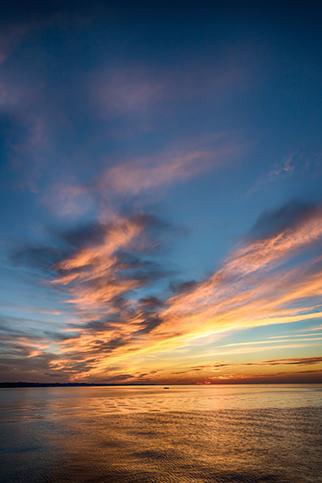
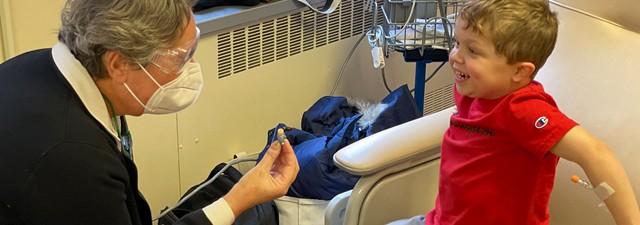 Children in Rochester with muscular dystrophy were among the first in the country last year to receive an experimental treatment that researchers at the University of Rochester Medical Center say has the potential to change the progression of the disease. The treatment involves an infusion of an experimental gene therapy that is hoped to restore motor function in patients. The URMC makes no bones about the significance of the research, noting in its literature that “(our scientists) are on the cusp of finding a cure for muscular dystrophy.” The disease, which is estimated to affect 12,000 Americans, mainly occurs in boys and causes a steady loss of muscle and premature death.
Children in Rochester with muscular dystrophy were among the first in the country last year to receive an experimental treatment that researchers at the University of Rochester Medical Center say has the potential to change the progression of the disease. The treatment involves an infusion of an experimental gene therapy that is hoped to restore motor function in patients. The URMC makes no bones about the significance of the research, noting in its literature that “(our scientists) are on the cusp of finding a cure for muscular dystrophy.” The disease, which is estimated to affect 12,000 Americans, mainly occurs in boys and causes a steady loss of muscle and premature death.
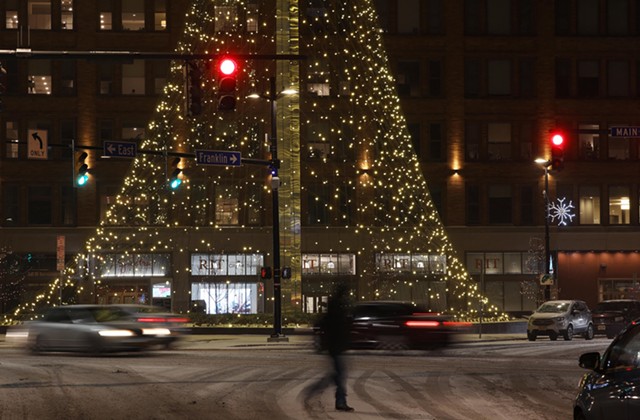 Since the early days of the American Revolution, liberty poles symbolized dissent from Great Britain. They sprung up in communities across the colonies in protest of taxes, and later as focal points of Fourth of July celebrations. Most of them eventually came down for one reason or another. Rochester’s original wooden pole, for instance, went up in 1846 and fell in a storm. Its replacement stood for decades before also succumbing to the elements. The 190-foot stainless steel monolith we know today was erected in 1965. Sure, it resembles a giant cheese slicer, but through the decades the Liberty Pole has been a familiar anchor for celebrations and protests alike.
Since the early days of the American Revolution, liberty poles symbolized dissent from Great Britain. They sprung up in communities across the colonies in protest of taxes, and later as focal points of Fourth of July celebrations. Most of them eventually came down for one reason or another. Rochester’s original wooden pole, for instance, went up in 1846 and fell in a storm. Its replacement stood for decades before also succumbing to the elements. The 190-foot stainless steel monolith we know today was erected in 1965. Sure, it resembles a giant cheese slicer, but through the decades the Liberty Pole has been a familiar anchor for celebrations and protests alike.
Did we leave out the reason you love Rochester? Let us know at [email protected].

But we thought our city deserved a valentine, too. So, CITY writers came up with “28 Reasons We Love Rochester” — one reason for every day of the Month of Love.
Did we miss your reason? Let us know at [email protected].
There is always room for a few more Rochesterians.

- PHOTO BY MAX SCHULTE
- Shamila ties up a pair of skate shoes for Rolling Resettlement's outing to the Roc City Skatepark.
After standing in line to vote on Election Day, people stand in line to post “I Voted” stickers on Susan B. Anthony’s grave.

- PHOTO BY MAX SCHULTE
- Abby Richards, 20, of Victor, places her "I Voted" sticker on Susan B. Anthony's grave.
We’re No. 1 when it comes to being “neighborly.”

- FILE PHOTO
- Mr. Rogers and the always-cheerful "Speedy Delivery" man, Mr. McFeely.
The House of Guitars.

Our Polar Plunge is in February and not on New Year’s Day like the rest of the world.

- PHOTO BY MATT DETURCK
- The 2015 Polar Plunge.
We can see silent films the way they were meant to be seen.

- PHOTO BY MAX SCHULTE
- Silent films don't come with scores, leaving their accompanists to improvise.

- PHOTO BY MAX SCHULTE
- Philip Carli is the accompanist for the Dryden Theatre's "Silent Tuesdays" film series.
Our buses have real names.

- PHOTO PROVIDED
- A Rochester Transit Service bus "named" Taryn.
The Haudenosaunee are fighting for representation in global sports.

- PHOTO PROVIDED
- The Haudenosaunee Nationals lacrosse team.
Our music scene punches way above its weight class.

- Max Schulte/WXXI News
- Danielle Ponder holds up her debut solo album, "Some of Us Are Brave," at an appearance at the Record Archive in Rochester, NY.
We know video games are serious business.

- COURTESY STRONG NATIONAL MUSEUM OF PLAY
- A girl plays a video game at The Strong National Museum of Play.
Birds love us.

- FILE PHOTO
- A magnolia warbler.
We’re a great sports town.

- FILE PHOTO
- The Rochester Americans of the American Hockey League are an affiliate of the Buffalo Sabres.

- COURTESY ROCHESTER RED WINGS
Artisan Works is a rabbit hole of cool.

- FILE PHOTO
- Artisan Works is a cross between an art gallery, an art studio, and a museum of working class Americana.
The old East Avenue mansions are still awesome.

- FILE PHOTO
- The Strong-Todd House on East Avenue.
We’re the right size.

- FILE PHOTO
- The Rochester International Jazz Festival draws 200,000 to downtown annually.
We still play “base ball.”

- FILE PHOTO
- A vintage "base ball" game at Genesee Country Village & Museum.
A ghost haunts an old dining hall we call a castle.

- PHOTO ILLUSTRATION
- This "White Lady" wears sneakers.
We’re going for the “Largest Snowball Fight” on record.

- FILE PHOTO
Country Sweet. ‘Nuff said.

- PHOTO PROVIDED
Parks. We got ’em.

- PHOTO BY LAUREN PETRACCA
- Monica Ortiz and David Treu, of Greece, picnic in the shade at Highland Park.
The arts are finally getting the public funding they deserve.

We didn’t give up on bike sharing — and made it better.

- FILE PHOTO
- HOPR bikes in downtown Rochester.
The region is a history enthusiast’s dream.

- PHOTO BY MAX SCHULTE
- A statue of Frederick Douglass in Aqueduct Park.
We invent stuff. Lots of stuff.

- FILE PHOTO
- George Eastman's patent for the box camera that became the foundation of the Eastman Kodak Co.'s empire.
We can “get anywhere in 15 minutes.”

- PHOTO BY MAX SCHULTE
- Overhead view of the new Roc City Skatepark beneath the Frederick Douglass-Susan B. Anthony Bridge.

- FILE PHOTO
- Lake Ontario at sunset.
Water is cheap and plentiful.
Western states and communities in that part of the country are fighting over access to freshwater. The demands are so high that scientists project Great Salt Lake in Utah will dry up within five years, and the city of Scottsdale in Arizona recently cut off water to a neighboring suburb. By those standards, we’re waterlogged. Lake Ontario is the 13th largest lake in the world, and while it has been abused, it has sustained people living here for generations at a cost of next to nothing. The average American family of four pays $73 a month for water. Whether you get your water from the Monroe County Water Authority, which draws from Lake Ontario, or the city’s Water Bureau, which draws from Hemlock and Canadice lakes, you’re likely paying less than amount quarterly. And the water is tasty, too!These researchers are close to curing muscular dystrophy.

- COURTESY URMC
We still have our Liberty Pole.

- FILE PHOTO
- The Liberty Pole was erected in 1965.
Did we leave out the reason you love Rochester? Let us know at [email protected].

